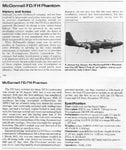kool kitty89
Senior Master Sergeant
An F2A-3 with 1350 hp (or better, 1450 hp) R-1820 engine would have compensated for the added weight, bringing performance back to F2A-2 levels, and also had a 2-speed supercharger for better altitude performance. (the 1300 hp SL-rated version produced 1000 hp at 17,500 ft with supercharger at high-speed setting) The F2A-3 would have had about the same power load with a 1300 hp engine as the F2A-2 did with its 1200 hp engine did (at both normal and maximum weights) so more hp should have put performance above that of the F2A-2. Though Brewster still had management troubles which limited production quantity, punctuality (keeping to dedlines), and (to a lesser extent) quality. The stability of Grumman was probably the biggest advantage of the F4F over the F2A (the only other being durrabillity/survivabillity) and Brewster probably would have been best off with outsoursing to suplement production.
A P-36 with 1300hp(87 octane)-1450hp(100/130 octane) P&W R-2000 would have brought performance to P-40 standards0 and with a P-42 configuration (with proper fan cooling) performance would likely surpass that of even later P-40s (like the Kittyhawk and Warhawk). I beleive the R-2000 had a 2-speed or 2-stage supercharger too, which would greatly improve altitude performance compared to the V-1710 rated for 13,000 ft. It also had the added durrabillity of a radial engine. The 1300-1450 hp Wright R-1820 engine mentioned above would also have such an effect. And may have been a better choice as the R-2000 was still developmental in 1942.
A P-36 with 1300hp(87 octane)-1450hp(100/130 octane) P&W R-2000 would have brought performance to P-40 standards0 and with a P-42 configuration (with proper fan cooling) performance would likely surpass that of even later P-40s (like the Kittyhawk and Warhawk). I beleive the R-2000 had a 2-speed or 2-stage supercharger too, which would greatly improve altitude performance compared to the V-1710 rated for 13,000 ft. It also had the added durrabillity of a radial engine. The 1300-1450 hp Wright R-1820 engine mentioned above would also have such an effect. And may have been a better choice as the R-2000 was still developmental in 1942.


